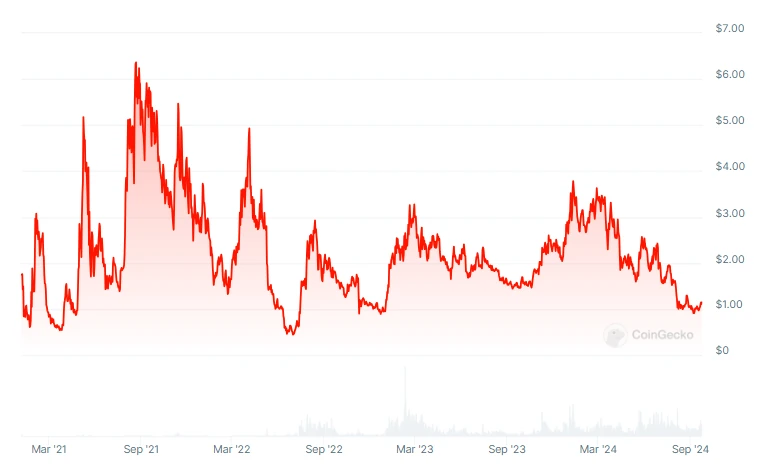Introduction
In the ever-evolving landscape of cryptocurrencies, new projects and platforms emerge all the time. Lido DAO (Decentralized Autonomous Organization) is one such project. It aims to provide a solution for liquid staking on various blockchains, starting with Ethereum.
This article will explore the world of Lido DAO, exploring its origins, functionality, governance, and impact on the crypto ecosystem.
Please read it and comment it!
The Birth of Lido DAO

Lido DAO was established in the days leading up to Ethereum’s highly anticipated “Merge” event, which marked the transition from Proof of Work (PoW) to Proof of Stake (PoS).
Staking, the process of locking up cryptocurrency to support network operations and earn rewards, became a crucial element of the Ethereum ecosystem.
However, Ethereum’s initial staking requirement of 32 Ether posed a challenge for many users.
Lido DAO entered the scene to address this challenge by offering a liquid staking protocol. This protocol allowed users to access the locked value of their staked tokens while still participating in the staking process.
By creating a stand-in token called stToken, users could maintain liquidity and even earn additional yield through participation in decentralized finance (DeFi) markets.
The Lido DAO Ecosystem
Lido DAO is a decentralized community governed by its participants through the use of the Lido DAO token (LDO). The DAO’s mission is to simplify and decentralize staking, making it accessible to as many people as possible.
While Lido DAO initially focused on Ethereum, it has expanded to support other Proof of Stake (PoS) blockchains like Polygon, Solana, Polkadot, and Kusama.
The Lido DAO ecosystem comprises various stakeholders, including node operators, developers, and users. These stakeholders collaborate to ensure the smooth operation of the liquid staking protocol and make decisions regarding protocol upgrades, network parameters, and other essential aspects of the platform.
The governance process is based on a token-weighted voting structure, where the number of LDO tokens held determines voting power.
How Does Lido DAO Work?

At its core, Lido DAO enables users to trustlessly stake their cryptocurrency assets, starting with Ethereum.
When users stake their assets through Lido DAO, they receive stETH, an stToken that represents their locked Ether. Unlike traditional staking, where tokens are locked up and inaccessible, stETH can be used in various DeFi applications, providing users with the benefits of staking while maintaining liquidity.
The process begins with users depositing their assets into the Lido DAO’s staking pool smart contract. The staking pool then delegates these assets to reputable node operators, who carry out the staking process on behalf of the users.
In return for their locked assets, users receive stTokens, which can be used for earning additional yield, decentralized lending, providing liquidity, and trading on decentralized exchanges (DEXs).
Lido DAO’s liquid staking solution simplifies the staking process, allowing users to participate regardless of the amount they hold. It eliminates barriers such as the minimum staking requirement and the need for technical expertise, making staking more accessible to a wider audience.
Lido DAO Tokenomics
Decentralized governance plays a crucial role in the Lido DAO ecosystem.
Through the use of the LDO token, participants have the power to shape the direction of the project. LDO holders can propose and vote on protocol upgrades, changes to network parameters, and other governance decisions.
The LDO token serves as both a governance token and a utility token within the ecosystem. Holders can stake their LDO tokens to participate in the governance process and earn rewards.
Additionally, LDO tokens play a role in managing the Lido DAO’s insurance and development funds. The total supply of LDO tokens is 1 billion, with a circulating supply of 895,276,452 tokens.
The Benefits of Liquid Staking

Liquid staking, facilitated by Lido DAO, offers several advantages over traditional staking methods.
Firstly, it provides users with the ability to access the locked value of their staked tokens. This means that users can maintain liquidity and use their stTokens in various DeFi applications, earning additional yield without sacrificing the benefits of staking.
Secondly, liquid staking eliminates the need for users to navigate the technical complexities of running their own staking infrastructure. By delegating their assets to reputable node operators through Lido DAO, users can participate in staking without the need for expensive hardware setups or ongoing maintenance.
Lastly, liquid staking offers a fast exit option for users. Traditional staking protocols often require a waiting period before users can unstake their assets, which can be problematic during periods of market volatility.
Lido DAO allows users to swap their stTokens for other assets through secondary markets, providing a quick and flexible exit strategy.
Lido DAO’s Expansion to Other Platforms
While Lido DAO initially focused on Ethereum, it has expanded its support to other prominent PoS blockchains. This expansion allows users to stake and earn yield on platforms such as Polygon, Solana, Polkadot, and Kusama, in addition to Ethereum.
By broadening its reach and supporting multiple blockchains, Lido DAO aims to make staking accessible to a wider audience and promote cross-chain interoperability.
This expansion also diversifies the staking options available to users, enabling them to choose the platform that best suits their needs.
Challenges Faced by Lido DAO

As with any project in the crypto space, Lido DAO has faced its share of controversies and challenges.
One notable controversy arose when a governance proposal to sell 10 million LDO tokens to a venture capital company was voted against by the Lido DAO community. This decision sparked debates about the potential centralization risks associated with Lido DAO’s significant stake in Ethereum’s staking pool.
The project has also faced challenges related to security. In 2023, security concerns were raised regarding potential vulnerabilities in Lido DAO’s token smart contracts. The team promptly addressed these concerns and reaffirmed their commitment to the security of user funds.
Security in Lido DAO
Security is a top priority for Lido DAO. The team behind the project implements rigorous security measures to protect user funds. They conduct regular audits of their smart contracts and collaborate with reputable security firms to identify and address any vulnerabilities.
In the event of a security breach, Lido DAO is committed to taking swift action to mitigate the impact on user funds. The project’s transparency and proactive approach to security ensure that users can stake their assets with confidence.
Impact on Decentralization

Lido DAO’s rapid growth and significant stake in Ethereum’s staking pool have raised concerns about its impact on decentralization.
Critics argue that a project with a substantial portion of the staked assets could potentially exert undue influence over the network.
However, proponents of Lido DAO point out that decentralization is a multi-faceted concept. While Lido DAO’s stake in Ethereum is significant, it is still subject to the consensus mechanisms and checks and balances inherent in the Ethereum network.
Additionally, the project’s governance structure empowers token holders to participate in decision-making, ensuring a distributed approach to governing the protocol.
Lido DAO Price in Depth

In the case of Lido DAO, we have been on the exchanges for 3 years.
Over these years, the cryptocurrency has gone through a bull market, a bear market and a bull market again.
Given this fact, I will only describe the pricing behaviour that I could see.
However, I always emphasize that these are only my personal opinions.
1st Bull Market
I’ll start from the beginning. The listing price is $1.75 per unit at the beginning of January 2021.
Until mid-August of that year, the price reached higher and higher All Time Highs.
Starting at $2.90, then $5.17, and ending at $7.30. This wild rally was not as strong as in the case of other projects, but it still allowed us to earn a lot.
What I mean here is amounts like times 4 or more.
All this within a period of 8-9 months.
The cryptocurrency boom ended while the bitcoin boom continued. Let me remind you that Bitcoin reached its peak in the previous bull market in mid-November.
1st Bear Market
The bear market passed through the entire cryptocurrency market like a tornado.
In just 10 months, the price dropped from ATH to ATL, or $0.46 per unit.
Only a few can endure this trial of pain due to losses.
In any case, the losses were enormous.
The largest decline could be recorded between April and June 2022. This is interesting, because usually the first 2 months are the most difficult for the operation of assets such as cryptocurrencies.
Since July 2022, the price has basically been in a sideways trend. Where’s the next bull market?
2nd Bull Market
I mentioned earlier…
One can only dream of a real boom, but…
However, the price is in an upward trend, but in fact it is waiting for a strong trend.
A weak trend can be seen and it is a bull market. What will happen next, no one knows.
The Future of Lido DAO

The future of Lido DAO looks promising, as the project continues to expand its support to additional PoS blockchains and explore new avenues within the DeFi space.
The team behind Lido DAO is dedicated to improving the platform’s functionality, security, and user experience based on community feedback and emerging industry trends.
As the crypto industry evolves and staking becomes an integral part of blockchain networks, Lido DAO aims to remain at the forefront, providing accessible and secure liquid staking solutions for users worldwide.
Conclusion
In conclusion, Lido DAO’s liquid staking protocol offers an innovative solution to the challenges of traditional staking.
In fact, Lido DAO aims to make staking more accessible and user-friendly. As it expands to support multiple blockchains and addresses security concerns, Lido DAO continues to pave the way for the future of decentralized finance.
Do you think about staking? Then, you should consider this project at all. From investment point of view price is low and before bull run will finish would give at least triple return of investment before the end of next year.

Leave a Reply
You must be logged in to post a comment.